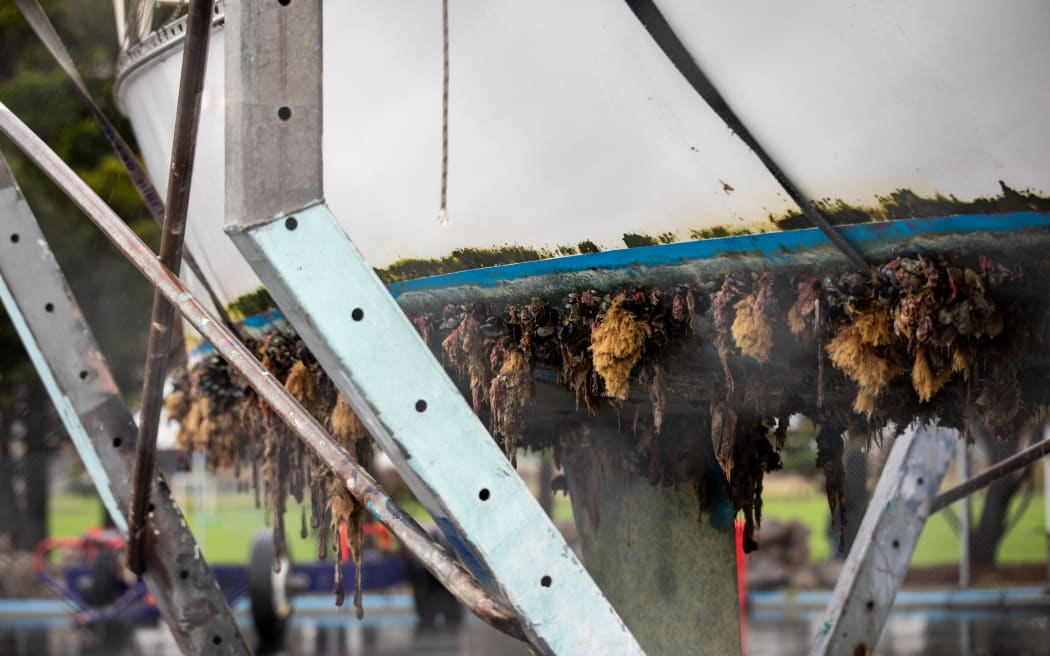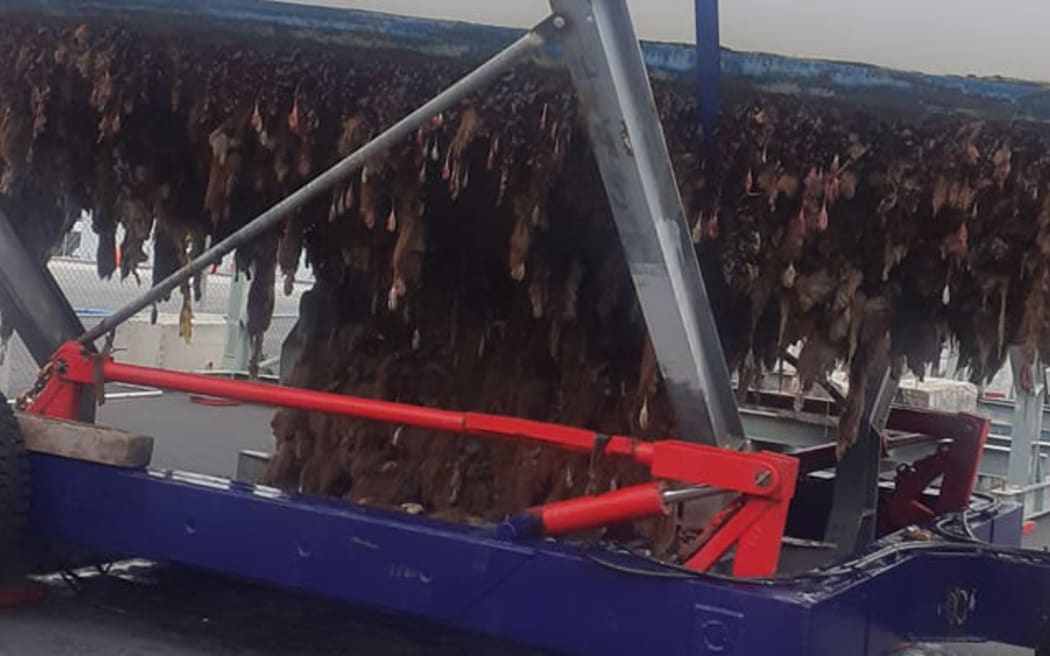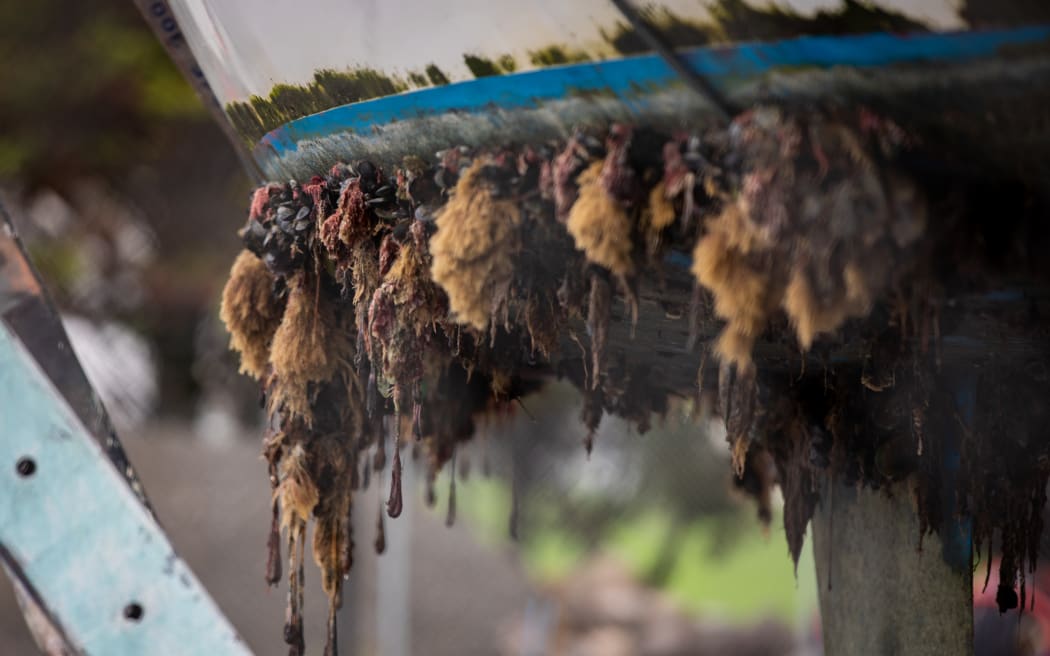Local communities around Christchurch's port are calling for urgent action to slow the spread of huge sea worms.
In some cases, Mediterranean fanworms or sabella, were known to have grown to more than half a metre long.
John Kottier is the programme manager for Kaimahi for Nature and Rāpaki Tangata Tiaki.
He said Whakaraupō Lyttelton Harbour had been feeding communities for a long time - but that was at risk now.
"You look at that harbour, and if you picture it over the Sail GP period, it was absolutely stunning. But people are just totally unaware of what's going on under the water," Kottier said.
"I can tell you now it's catastrophic.
"We talk about stories from when we were young and the fish we used to take out of there - it sustained us. Crayfish was a weekly occurrence on our tables," he said.
"But now we struggle to get five flounder here, whereas in the days when I was a child, we used to get 60 or 70 in one drag."
Kottier believed a contributing factor to the decline was Mediterranean fanworms.
The tube worm grows on hard surfaces in huge clumps - with sometimes up to 1000 worms per square metre, suffocating whatever was underneath.
"This fanworm just changes the biodiversity of the marine environment. It has no natural predator here," he said.

A boat with biofoul at the Naval Point Yacht Club's cleaning cradle. Photo: RNZ / Nate McKinnon
Canterbury Regional Council biosecurity manager Carl Diamond said Mediterranean fanworms were first detected in New Zealand in 2008, in Lyttelton Port.
Numbers were manageable until 2020, when they began increasing, he said.
Earlier this year, they spread further into Whakaraupō, Lyttelton Harbour.
"We found that it had spread to Corsair and Cass Bays. We found it on four vessels and those fanworms that we had found, we removed," he said.
"At the moment, we've got a tender out for a delimiting survey."
The successful surveyors will find the total area affected by the worms.
Until the survey is done, it was not known how many were lurking in the depths under boats or wharves.

The Lyttelton Port Company "strongly supports" clean hull regulations. Photo: Supplied / Naval Point Yacht Club
But in a statement, Lyttelton Port Company (LPC) said it had already removed close to 1000.
"Sabella forms colonies on structures such as vessels, wharf piles and pontoons. LPC surveyed the damaged wharf structures and detected the presence of fanworm on these and surrounding structures," it said.
"LPC led an immediate local response within the inner harbour in November 2021 involving our divers and contracted divers with advice from NIWA and physically removed over 931 fanworms."
Biosecurity New Zealand director of readiness and response John Walsh said the worms had been eradicated from other parts of the motu.
"Tutukaka Marina in Northland, for example, we've had no detections there in five years after a local elimination effort and we think it has gone," he said.
"Picton and Waikawa Marinas in the Marlborough Sounds, we've had good cracks at it there... and have not been able to find any there for two years."
But the density of the worms in Whakaraupō had made eradication efforts there difficult, Walsh said.
Ngāti Wheke and Naval Point Yacht Club believed urgent action was needed.

Naval Point Yacht Club's cleaning cradle is not able to hold vessels larger than 10 tonnes. Photo: RNZ / Nate McKinnon
Club board chair Colin Lock thought a clean hull policy would make a big difference.
"One, you need to have a [cleaning] facility. And two, some regulation around a minimum [cleaning] cycle, say every two years," he said.
"By way of an example, I have to provide an insurance certificate to be in [Lyttelton's] Te Ana Marina.
"Why shouldn't I also have to have proof of a clean hull?" Lock said.
He described the limited cleaning infrastructure currently offered for boats in Lyttelton as "abysmal".
It was especially difficult for recreational vessels larger than 10 tonnes because the club's cleaning cradle could not hold them.
Clean hull regulations were "strongly supported" by LPC.
"We are working on our own biosecurity plan for Te Ana Marina in the absence of regional clean hull regulations," it said in a statement.
Walsh confirmed it was one of the options being explored.
"There's a good clean hull programme going at the top of the North Island and the top of the South Island," he said.
"We're also just getting up and running a national behaviour change programme encouraging boaties, yachties, to understand the risk of biofouling and to do something about it."
All agreed it would take everyone doing their bit to release Whakaraupō from the Mediterranean fanworm's strangle hold.

